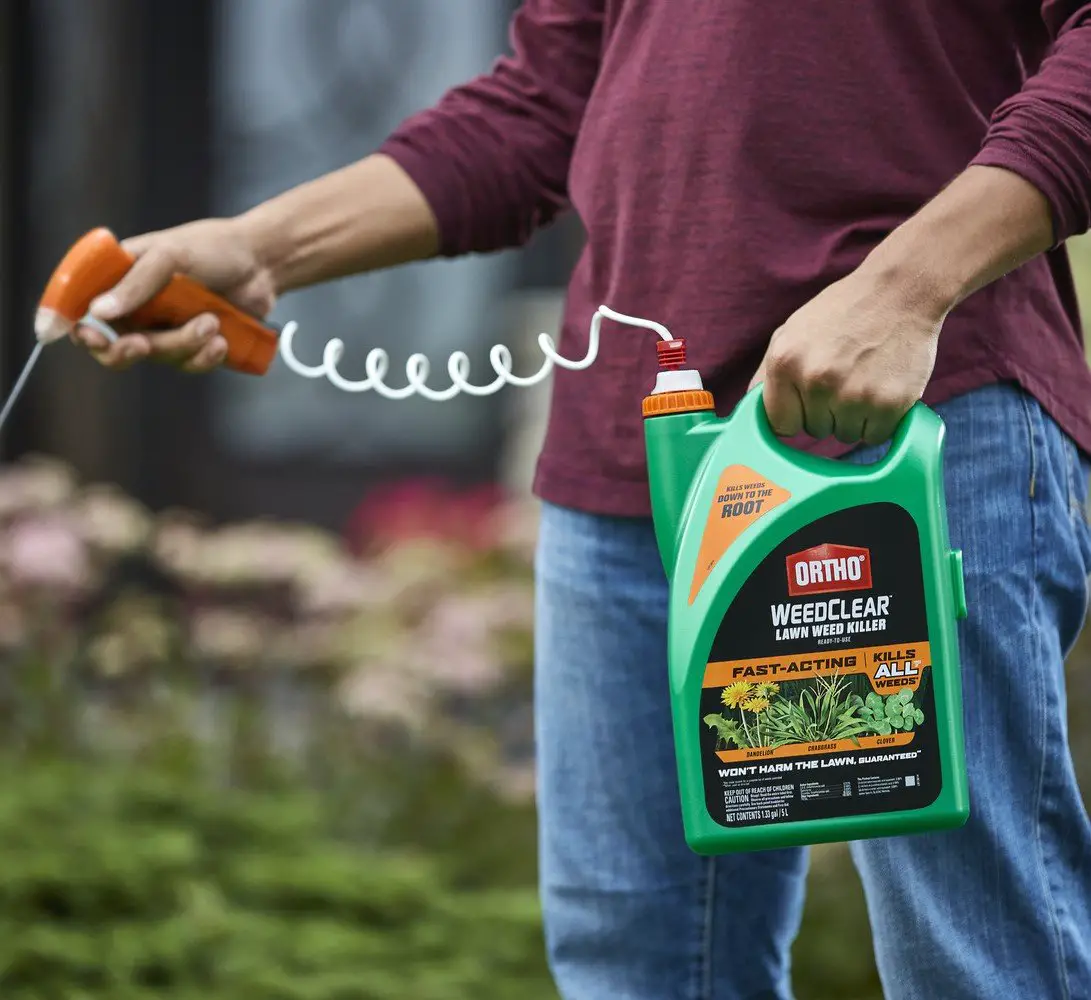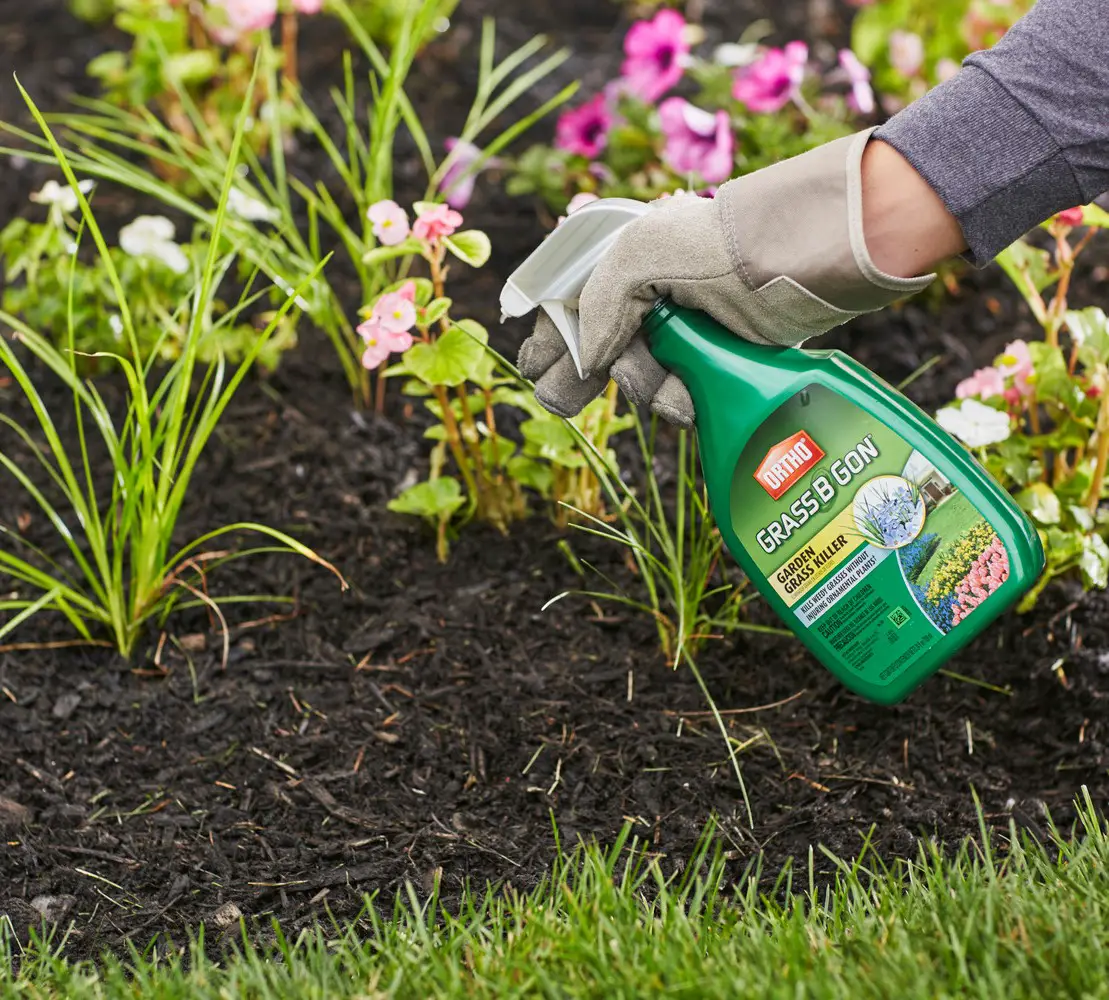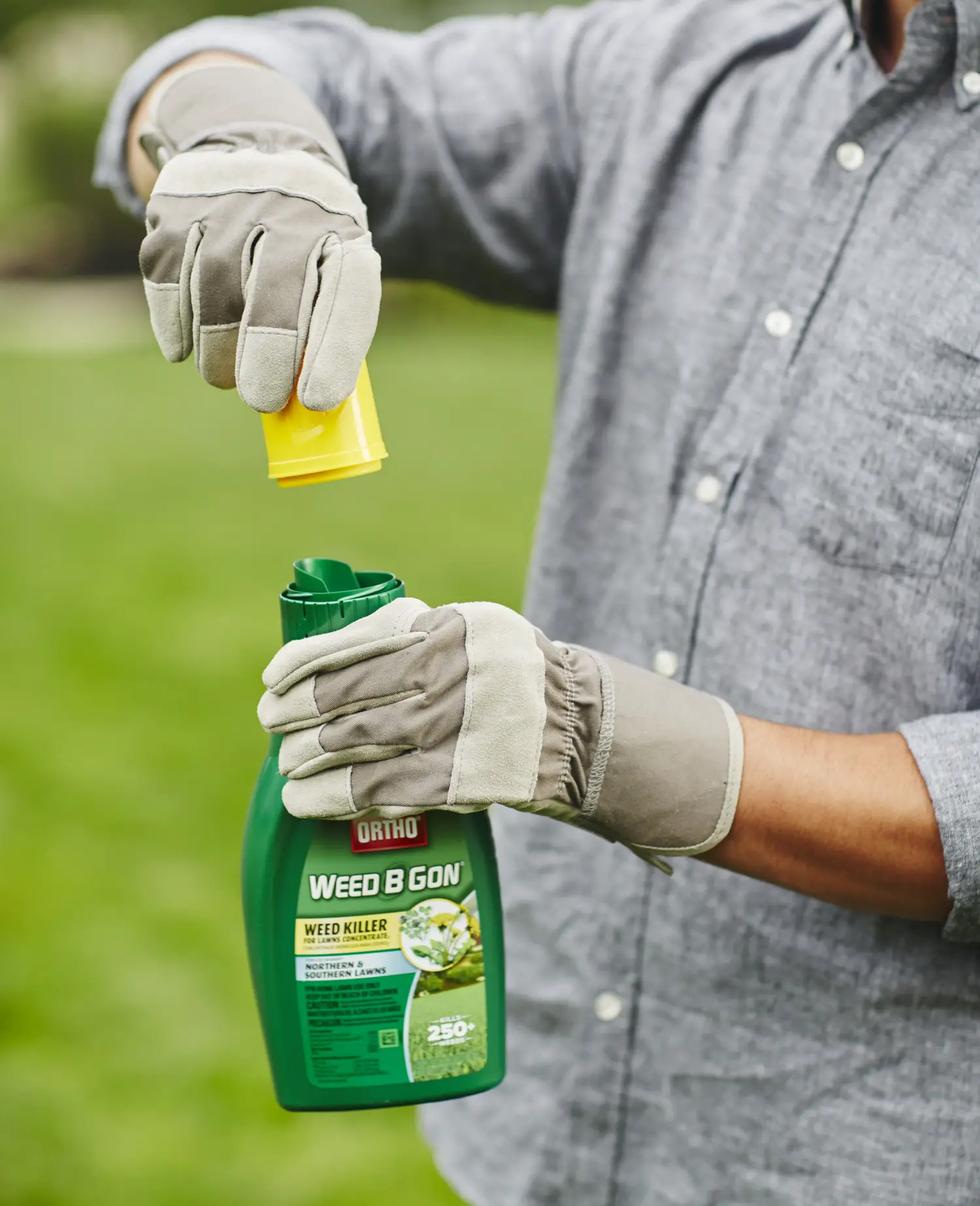The Case For Tolerating Wild Violets
Because wild violets have pretty flowers that bloom early and often, not everyone regards this plant as a weed. Many homeowners choose to let these wildflowers grow in their lawns and elsewhere.
There are several reasons for tolerating wild violets in the lawn:
- It makes for a low-maintenance lawn.
- It avoids the use of herbicide.
Cover Your Garden Beds
One of the best ways to deter weeds in your garden is to cover it. Before planting you should cover your garden with cardboard, newspaper, or black landscaping fabric.
Hold any of these options in place with heavy bricks to keep them from blowing away.
When you cover your garden, this stops sunlight from getting to the weeds. The weeds can then not germinate and grow.
Also, if you use cardboard or newspaper, it should compost and add to the soil quality of your garden too.
Make Sure The Soil In Your Lawn Is Not Compacted
This can be a time-consuming task, but having a layer of soil that is one-quarter to one-half inch thick can make a significant difference in the health of your lawn. You can also consider an aeration plan that will better allow water, air, and nutrients to reach grass roots. This can be done by digging holes in the soil at places throughout your lawn. If you have underground lines, irrigation, or invisible fencing that prohibits you from a mechanical core aeration, find out more about the bio aeration we offer here at Contenders and see if it would be the right fit for you.
Also Check: What Causes Thatch In Lawns
How Weeds In Lawns Work
To understand how to treat a lawn, its important to understand the weeds themselves. Weeds are plants, just like the grass in your lawn. Because they are plants, weeds flourish in the same conditions that a lush, green lawn would. Weeds also grow when the grass is cut low and the soil is compacted. These ideal conditions can lead to a lawn full of weeds, but there are a few different types of weeds to be aware of:
- Broadleaf weed. These weeds include dandelions, clover, ground ivy, oxalis, chickweed, thistle, dollarweed, and plantain. The leaves on these weeds are broad and flat.
- Grassy weed. These weeds include crabgrass, foxtail, annual bluegrass, and quackgrass. These weeds grow in blades and look like grass.
- Grass-like weed. These weeds include nut sedge, wild onion, and wild garlic. These weeds may look somewhat like grass, but they grow in a more tubular and hollow shape.
Its important to identify which type of weeds are growing in your yard before choosing a treatment. Some products are specifically designed for certain types of weeds and can only be used for that kind.
How To Control Weeds In Your Lawn

The first time my lawn erupted into a sea of purple violets, I actually rather liked it I tend to evaluate a plants beauty first before sealing its doom by calling it a weed. For the most part, however, gardeners prefer for their turf grass and their flowers to stay in their respective places and for weeds to stay out of the picture altogether.
Recommended Reading: Will Peat Moss Help My Lawn
What Is Weed Control
When tending to your garden, weed control is one of your top priorities. Its important because weeds will steal nutrients, water, and sunlight from the plants you want in your garden.
Weed control is the act of ridding weeds from your garden. It sounds simple, but it can be difficult.
The more weeds you have, the less happy your plants are going to be. For this reason, you need to pay close attention to the weeds popping up in your garden. Below is a list of methods to control the weeds in your garden.
Hopefully, youll find some idea to help you maintain a gorgeous garden and keep weeds under control.
Does Vinegar Kill Weeds Permanently
If you are an avid gardener, you may read that vinegar is a common remedy to kill unwanted grass and weeds.
Vinegar is considered a contact herbicide and may kill weeds and undesirable plants by drying out the leaves above ground. However, it only works on weeds with shallow roots and weed seedlings.
Read Also: How To Control Clover In Lawn
Safelawn Natural Lawn Feed
If you are wanting a child and pet friendly option then we recommend using our SafeLawn Natural Lawn Feed Not only will SafeLawn help grass to outcompete weeds and prevent them from establishing again, but it will also feed your lawn all year round, as well as creating a thicker, stronger lawn. All you need to do is apply every 3-4 Weeks from February to September when the grass is actively growing. Furthermore, you can be rest assured that using this product is natural so is safe to use around children and pets.
How To Get Rid Of Weeds In Grass
The best defense against weeds is a thick healthy lawn. Cool-season grasses, Tall Fescue, Ryegrass and Bluegrass thrive in moderate to above freezing temperatures 40 to 85 degrees fahrenheit. Warm-season grasses perform best in warm conditions ranging from 60 to 95 degrees fahrenheit. Both grass types attract different weeds based on the environmental and regional challenges. Following the correct mowing height can prevent these weeds from germinating and establishing in home lawns. height for cool-season grass is between 2.5 and 4 inches, while warm-season grass grows between 1 and 3 inches. Maintain your cool-season grass at 4 inches and hot-season grass to 3 inches to combat weed growth and boost your turfs health. Besides Mowing your lawn, here are some other effective ways to control weeds.
Hand Pulling Weeds
One highly effective way to control and stop the spread of weeds in your turf is by yanking the entire plant, including its root system. Pulling weeds is fun and easy if you only deal with a few stray weeds. However, if youre removing all the weeds in your turf, youll find it more labor-intensive and demanding. Most grassy weeds have thorns and other dangerous physical features that make the weeds risky to pull by using your hands. The best thing about letting LAWN DOCTOR pull the weeds on your behalf is that it aids total removal of the weeds.
Pry Weeds With a Weeder
Using Scuffle Hoe
Post-Emergence Herbicides
You May Like: How To Get Rid Of Wild Grass In My Lawn
Most People Dont Know Where To Start With Controlling Weeds
Have you tried many different methods but nothing seems to work? We all know how difficult it is to deal with weeds as many of us have had a weed control issue in the past. Weed control is a challenge, but once you have the knowledge under your belt, it doesnt have to be! Learn how to control weeds in just a few easy steps!
Use The Right Amount Of Fertilizer
If you don’t fertilize your grass, it’s time to start. Fertilizer is essentially food for your grass, and it provides it with all of the nutrients it needs to stay healthy. While it may seem counterintuitive, fertilizer can be a great way to curb a weed problem the trick is to make sure you’re using the right amount. Too much fertilizer can encourage weed growth and send them into overdrive, whereas not enough fertilizer will make your grass too weak to stand up to weeds. The best defense against most types of weeds is a thick lawn to ensure there’s no room for them to take root.
Read Also: How To Get Rid Of Pee Spots On Lawn
A Guide To The Most Common Lawn Weeds
Weeds may be green, but they are plants growing where theyre not wanted within your lawn.
Weeds can take any form and can vary depending on where they grow and typically produce large numbers of seeds, assisting their spread.
Unfortunately, weeds are often excellent at surviving and reproducing and are commonly the first plants to colonise and dominate.
In our full guide below, myhomeTURF offers lawn lovers a comprehensive guide that helps identify Common Lawn Weeds and gives guidance on prevention, control & best herbicides to use.
How To Kill Weeds In Your Lawn

When faced with a lawn full of weeds it can seem a daunting task of how to eradicate them successfully.
Whether you have just been too busy in todays hectic world, or you have moved into a new property, its not difficult to bring the lawn under control.
It can take just a simple step-by-step approach.
A simple 10-minute stroll through your lawn to remove weeds by hand is one of the best ways of keeping them under control.
See our video below for a great demonstration.
Also Check: How To Identify Lawn Grasses
Keep Your Grass Mowed At Medium Length
We all enjoy the look of freshly mowed grass, but cutting your grass as short as possible is unhealthy for your lawn. An effective lawn weed control plan includes keeping your grass high enough to prevent weeds from easily sprouting, MSUs turf department recommends 2.5 inches. Do not mow lower than 2 inches, and if you use a mowing company to take care of the lawn, make sure they do not cut lower than this length. Some mowing companies will mow too low so they do not need to come back as often, and its important to have a conversation with them about what you want, so you can both do what is best for your lawn. Some homeowners may choose to mow twice a week at higher levels to further promote lawn health, but the choice is ultimately up to you.
Heat Is The Key To Composting Weeds
Few experiences compare to the joy of watching weeds shrivel in the sun after a morning weeding session, but then what should you do with them? Their best resting place, of course, is a compost pile or bin, which is the end of the story if the weeds going in are free of seeds. In reality, however, a good half of the weeds you pull probably hold seeds. Separating the seedies from other weedies is impractical, so weed seeds in compost are customarily killed by raising the temperature in the heap.
Keep it hot. Running a hot heap calls for precise mixing and remixing of materials. Rather than struggle to heat up a heap that wants to run cold, I suggest waiting until a weedy heap reaches a nearly rotted state to set things right. From there, you can solarize small batches of moist compost in black plastic nursery liners that are enclosed in clear plastic bags and placed in the sun for two to three days.
Now youre cooking. Easier than solarizing, plug in an old Crock-Pot outdoors, turn it to its lowest setting, and warm batches of compost while you sleep .
Heat treating weedy compost destroys many of the microscopic life-forms that give compost its punch, so its a good idea to reprocess cooked compost for two to three weeks before using it in the garden. Place it in a plastic storage bin with a handful of earthworms borrowed from your garden and it will soon be laced with humic acids and other plant-pleasing compounds.
Also Check: What Can I Use To Kill Weeds In My Lawn
How To Control Daisies In Your Lawn
In order to control the spread of daisy in your lawn you can try the following:
FINAL THOUGHT
Daisy weeds do not tolerate long grass because their leaves have limited power of elongation. Always mow your lawn as this will reduce the seed production. Remember to always read and follow manufacturers instruction on the rates you are supposed to use when dealing with chemicals to control weeds in your lawn.
Roundup For Lawns1 Ready To Use
- Make sure this fitsby entering your model number.
- Weed killer with an extended wand to make it easy to spot-treat lawn weeds
- Kills over 250 weeds, including crabgrass, dandelion, clover, and yellow nutsedge-won’t harm your lawn
- Lawn weed killer for use on Northern grasses, including Kentucky bluegrass, perennial ryegrass, fescue, bermudagrass, buffalograss, and zoysiagrass
- Starts working immediately and rainproof in as little as 3 hours
- For hard-to-kill summer crabgrass and grassy weeds, use Roundup for Lawns Crabgrass Destroyer
Also Check: What Is The Best Fertilizer For My Lawn
Managing Weeds In Warm Season Lawns
Factsheet | HGIC 2310 | Jul 13, 2022 | |
Annual trampweed is a winter annual weed that becomes established in lawns that are mowed very low and not irrigated or fertilized adequately. The fluffy seeds will blow in the wind. For more information, see HGIC 2319, Annual Trampweed.Joey Williamson, ©2015 HGIC, Clemson Extension
Bermudagrass, centipedegrass, zoysiagrass, and St. Augustinegrass are the most popular warm-season turfgrasses grown in South Carolina. Warm-season refers to the fact that they prefer the warm temperatures of spring and summer to grow. In the winter months, they do not actively grow, but become dormant and the foliage turns tan.
Control The Correct Weeds
When applying weed control ensure that it kills the type of weed that is an issue. Applying a crabgrass preventer will not help you get rid of dandelions and applying a broadleaf weed control will not help to get rid of crabgrass. As there are two major types of weed, there are also two major types of weed control: broadleaf weed control and grassy weed control. This information is usually found on the product label. Oftentimes there will also be a chart on the product that identifies the specific types of weeds it kills.
It is essential to apply pre-emergent control in the early spring before soil temperatures get warm enough for seed germination.
Jonathan Green
Also Check: How Much Cost Lawn Sprinkler System
Use A Selective Herbicide
You want to choose a weed killer which has been engineered to kill the weed but not that the grass you have. Selective means it won’t kill all plants it’s applied to. 2,4-D is the more common selective herbicide. Using it properly has minimal risks and is extremely effective at killing weeds without killing your grass.
Selective herbicide works by entering the leaf of the weed and changing the way the plant handles nutrients. It causes it to literally grow and age itself to death. Selective herbicides typically take 4-14 days to see very strong results but can literally start to work overnight. It is an effective way to kill 99% of broadleaf weeds down to the root so that the same weed shouldnt be a problem in the future.
If you want to do this yourself the products, we recommend would be either Weed B Gon or Killex. These products can be purchased at a local hardware store such as Home Depot or Lowe’s.
Regularly Brush The Artificial Surface

While it is undoubtedly critical to protect the soil against weeds taking root, the majority of weed problems on artificial turf and pavers actually occur when weeds grow on top of the surface.
But arent artificial grass and pavers inorganic, thus prohibiting growth from occurring?
Yes, but soil deposits and plant debris that accumulate on top of the artificial surface actually provide enough bed for weed growth to occur. While these types of weeds will be flimsy and easy to remove, they are nonetheless unsightly when they start to sprout up.
Therefore, regularly brush artificial surfaces to remove any soil or organic buildup. A bi-weekly brush is usually sufficient, but once again, it is important to know your region and understand the conditions in which weeds can begin to sprout. Unfortunately, some of the most pesky breeds can arise in just a couple of days with little bed required, so more frequent brushing may be necessary.
Recommended Reading: What To Use To Kill Ants In Lawn
Fighting Couch Grass In The Lawn
Couch grass also appears occasionally in the lawn. However, it will not bother most amateur gardeners too much. After all, it is a grass species that is hardly noticeable in combination with the lawn grasses. However, if the light-colored, relatively broad leaves are a thorn in the side of a well-kept ornamental lawn, there is no way around cutting off the areas containing couch grass with a spade. To ensure that the lawn is not too badly affected by this measure, it is advisable to first remove the sod that has been overgrown by the couch grass and pull out both the above-ground plant parts and all rhizomes by hand. After that, you should also systematically sift through the deeper soil layers with a digging fork and uproot all couch grass rhizomes. Then level the subsoil again and lightly compact it with your foot, and finally place the now couch grass sods back on top. At first, this measure sounds time-consuming, but since couch grass usually only occurs in small areas in the green carpet, it can be done relatively quickly.
